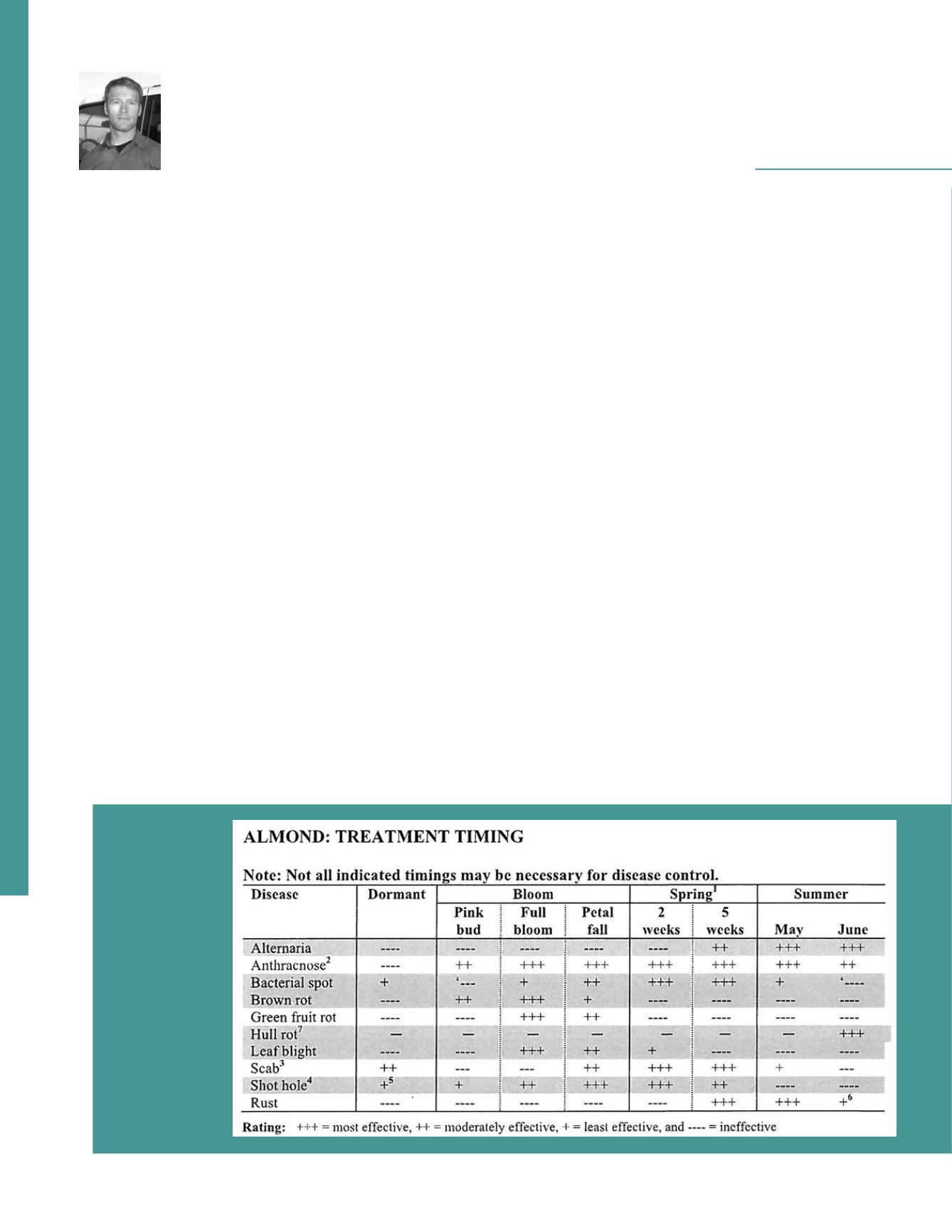
TIME TO CONSIDER
32
Almond Facts
JANUARY | FEBRUARY 2017
Time To Consider
DAVID DOLL, UCCE Nut Crop Pomology Farm Advisor, Merced County
I hope you all had a wonderful holiday season and a great start to the New Year. The winter has been
favorable for almond production with adequate chill and rains. If it remains cold through the end of
January, bloom should be a bit later than we have experienced in the previous years. Warmer conditions,
however, will accelerate bloom. With that in mind, below are some considerations for your operations.
Fungicide Sprays
Due to almond flower sensitivity to disease and weather
conditions conducive for disease, most people will spray a
fungicide during this period. In wet conditions, multiple
sprays may be needed, while in dry years zero to one
spray may suffice. Conditions that favor disease formation
include rain or heavy dew, and warmer temperatures for
Brown Rot, Anthracnose, Bacterial Spot and Shot-hole,
and cool, wet weather for Jacket-rot. Fungicide selection
should provide coverage for the diseases of concern (Please
see the fungicide efficacy table).
Since most fungicides work to protect the plant from being
infected by killing the germinating spore, bloom sprays
should be applied before rain events to provide protection
for flowers, flower parts and emerging leaf tissue. Some
chemistries, such as FRAC groups 3 and 11, have the
ability to “reach back” because they are able to move
through the epidermis of the plant’s leaves or flowers. This
provides a slight curative component to these powerful
fungicides and makes them a great option if a spray was
missed by one to two days or there wasn’t enough time to
cover the acreage prior to the rain event.
Coverage from a fungicide spray will last around two
weeks, unless significant rainfall occurs. If applying prior
to a rain event, applications will need a few hours to dry to
prevent “run-off.” In rainy weather, follow-up sprays will
be needed every seven to 10 days. Some varieties — such
as Butte and Carmel, are more susceptible to disease and
may require a spray even in dry weather, while others —
such as Nonpareil, are quite tolerant and may not need a
bloom spray. Orchard history, weather and your comfort
level should be the guidance in determining your bloom
and springtime disease control strategy.
It is important to avoid back-to-back application of
fungicides within the same mode of action. Mode of
actions is simplified using the FRAC number – and thus
back-to-back applications of the same FRAC number
should be avoided. This includes pre-mixed fungicides.
An example of a rotation program for a multiple sprays for
rainy weather include:
Figure 1: Fungicide
timings for various
almond diseases.
Some diseases may
require multiple
treatments to prevent.


